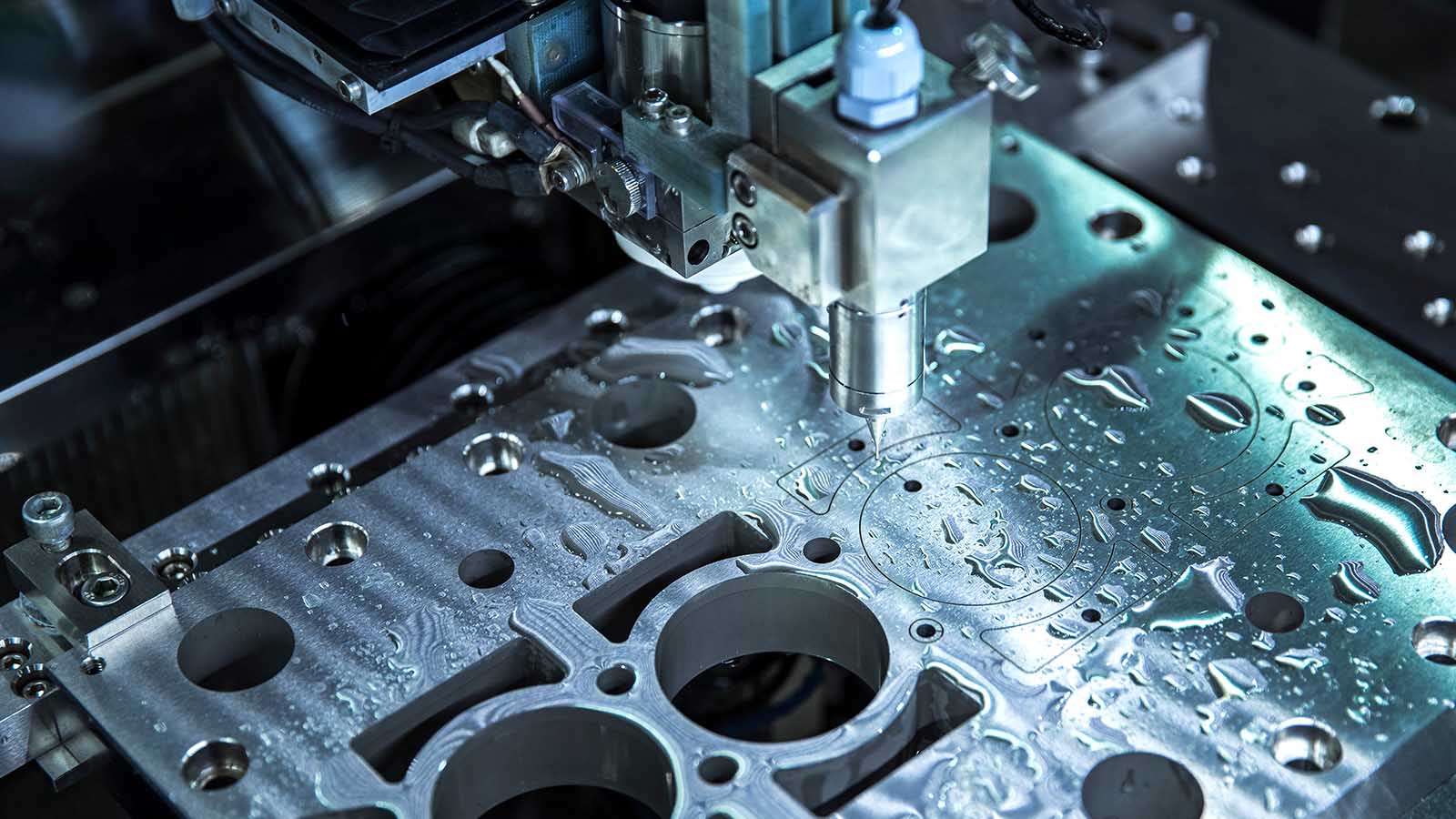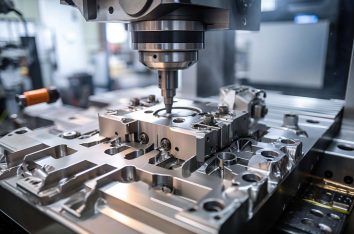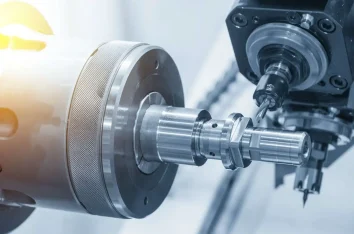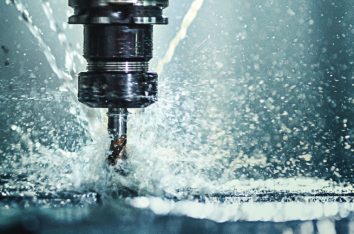The manufacturing industry has evolved rapidly, demanding precision and efficiency in today’s world. Leading this technological revolution is CNC machining, a method that has transformed manufacturing across numerous industries with its capability to craft a wide range of parts and components. At the forefront of this field is Ram-Z Fab, known for its advancedCNC machining services, which cater to specialized applications such as automation design and medical testing.
This guide provides comprehensive insights into CNC machining, explaining what it is, its various applications, and the reasons behind its widespread adoption. CNC machining has revolutionized precision manufacturing by standardizing processes through sophisticated machinery, simplifying complex parts production. The technology not only enhances quality and standards but also significantly reduces production times and costs. Companies like Ram-Z Fab leverage CNC machining to serve diverse industries, including food packaging and robotics, more effectively than ever before. With its ability to produce high-precision components efficiently, CNC machining is integral to modern manufacturing, driving innovation and maintaining a competitive edge.
Understanding CNC Machining
CNC machining, short for Computer Numerical Control, is a manufacturing process where pre-programmed computer software directs the movement of factory tools and machinery. This technology enables the creation of precise three-dimensional cuts and shapes, all controlled automatically through sophisticated controllers and software. Before CNC machining, achieving such precision required unique setups for each task, making it nearly impossible to automate to this extent. Today, CNC machining is revolutionizing manufacturing by streamlining processes and enhancing accuracy in ways previously unattainable. This innovation has dramatically improved production efficiency, consistency, and quality across various industries, setting a new standard for precision engineering.
The Evolution of Machining
To thoroughly understand CNC machining, it's essential to grasp its purpose. Traditional machining required extensive manual control, with skilled operators using levers, buttons, and wheels to guide tools dynamically. While powerful, this method was slow, inconsistent, and less precise.
The advent of CNC technology revolutionized this process. By integrating computer control, CNC machining offers manufacturers unparalleled accuracy and repeatability. This significant advancement not only enhanced product quality but also dramatically improved production efficiency. CNC machining streamlined operations, allowing for complex geometries and high precision while reducing production time and costs. This transformation has fundamentally changed the manufacturing landscape, setting new standards for precision and efficiency.
How CNC Machining Works
The CNC machining process begins with creating a virtual 3D model of the desired part using CAD (computer-assisted drafting) software software. Once the design is finalized, it is converted into instructions that the CNC machine can understand through CAM software
This results in a program known as G-code. The G-code provides detailed, step-by-step instructions on tool paths, cutting speeds, and depths. After loading the G-code into the CNC machine, it is equipped to produce the part with high precision and efficiency. This method ensures consistent results, optimized production, and the ability to create complex geometries with exceptional accuracy. Additionally, CNC machining enhances material utilization and reduces waste, contributing to cost savings and environmental sustainability.
The Role of CNC Operators
CNC machines are fully automated, but they still require skilled operators to ensure optimal performance. CNC operators are responsible for setting up the machines, loading tools, and overseeing the machining process. They also inspect the quality of the produced parts and make necessary adjustments to maintain precision throughout the production run.
At Ram-Z Fab, our operators are highly trained professionals with a keen eye for detail. Their expertise ensures that each part we manufacture meets the highest standards of quality and precision, reflecting our commitment to excellence. By maintaining rigorous oversight and attention to detail, our team ensures that every project, regardless of complexity, achieves the desired outcome with accuracy and reliability.
Types of CNC Machines
As a result, CNC technology is used in all areas of machining. Types of CNC machines
CNC Mills
CNC mills offer versatile capabilities for cutting material stock in various ways. They use spinning cutting tools to precisely shave away parts of the workpiece. CNC mills can produce complex shapes, including sharp corners, flat sides, and oval holes, making them ideal for creating detailed and intricate components. Their precision and adaptability allow for a wide range of manufacturing applications, from intricate parts to larger, more complex assemblies. This versatility makes CNC mills invaluable for industries requiring detailed and precise component fabrication, enhancing their ability to meet diverse production needs effectively.
CNC Lathes
CNC lathes are primarily used for machining cylindrical parts. During the process, the workpiece is spun while a cutting tool moves along its exterior to remove material and shape the piece as needed. This method is particularly effective for producing shafts, screws, and other circular components. CNC lathes excel in creating precise, round shapes and are ideal for applications requiring high accuracy in cylindrical parts. Their ability to handle complex geometries and maintain tight tolerances makes them essential for industries where precision and consistency in circular components are crucial.
CNC Routers
CNC routers function similarly to other CNC machines but are specifically designed for cutting softer materials such as timber and plastics. They are widely used in the woodworking and sign-making industries. CNC routers excel in tasks that involve creating detailed designs and shapes in materials that are easier to cut compared to metals. Their precision and versatility make them a valuable tool for crafting intricate woodwork, custom signs, and decorative elements. By employing specialized bits and adjusting speeds, CNC routers can achieve high-quality results in a variety of soft materials, enhancing their utility in creative and production settings.
CNC Plasma Cutters
These machines use a plasma torch to cut through metals and other conductive materials of varying thicknesses. Due to their rapid cutting speed and precision, plasma CNC machines are ideal for high-volume metal fabrication. At Ram-Z Fab, we leverage CNC machines across various industries to address our clients' diverse needs.
Our cutting-edge equipment enables us to handle projects of any size or complexity with exceptional accuracy and cost-efficiency. Whether the task involves intricate details or large-scale production, our advanced machinery ensures top-quality results, meeting the high standards expected in today's competitive manufacturing landscape.
What Materials Are Used in CNC Machining?
CNC machining offers the benefit of being versatile when it comes to materials. It can be used with all types of metals, plastics, and composites.
Some common materials include:
Aluminum: The light metal with good machinability
Steel: High in strength and durability
Titanium: Best known for its strength, lightness, and low density.
Copper: Used for its aesthetics and machinability
The choice of material is crucial and depends on specific requirements such as strength, weight, corrosion resistance, and cost. At Ram-Z Fab, , we work closely with our clients to determine the optimal materials for their projects. This collaborative approach ensures that each part is designed to meet the highest standards of performance and value, tailored to the unique demands of the application. By selecting the most suitable materials, we help our clients achieve the best possible results and maintain a competitive edge in their respective industries.
Applications of CNC Machining
CNC machining is a valuable technology and precision Machining offers for manufacturing parts. There are a few key applications:
Automation
CNC machining is crucial for producing precise components in the automation sector, such as parts for robotic systems and conveyor belts. Exact tolerances are essential for these critical components, as they are integral to the operation of automated systems and influence their longevity. High precision ensures that each part functions reliably, enhancing the overall efficiency and durability of automation equipment. By maintaining stringent quality standards, CNC machining contributes to the smooth and dependable operation of automated processes, ultimately supporting the advancement and effectiveness of automation technology.
Food Packaging
In the food packaging industry, CNC machining is indispensable for producing molds, dies, and other essential components for packaging machinery. The precision provided by CNC machining is critical in meeting the strict hygiene and safety standards required in food packaging. By delivering exact tolerances and high-quality parts, CNC machining helps ensure the integrity of packed foods and supports compliance with industry regulations. This precision not only enhances the reliability of packaging machinery but also plays a key role in maintaining the safety and quality of the food products.
Medical Testing
CNC machining is extensively used in the medical field for producing test equipment, surgical instruments, and implants. Its importance in this sector cannot be overstated, as it allows for the use of biocompatible materials and achieves exceptionally tight tolerances. This precision is vital for ensuring the reliability, safety, and compatibility of medical devices with the human body. CNC machining’s accuracy and capability to work with specialized materials make it essential for creating high-quality, effective medical components, contributing to advancements in healthcare and patient safety.
Robotics
CNC machining is extensively used in the robotics industry to produce precision components such as gears, actuators, and structural elements. These parts often feature complex geometries and require tight tolerances, which CNC machines can deliver with high repeatability. Consistently producing precise and intricate components is crucial for the reliable performance and functionality of robotic systems. By ensuring that each part meets exact specifications, CNC machining contributes significantly to the overall efficiency and effectiveness of robotic applications, supporting advancements and innovations in robotics technology.
At Ram-Z Fab, we take pride in our extensive experience across various industries. Our expertise in CNC machining allows us to meet the unique requirements of each sector by delivering parts that not only meet but often exceed industry standards. Whether it's for robotics, medical devices, food packaging, or automation, we ensure that every component we produce maintains exceptional quality and precision, contributing to the success and reliability of our clients' projects. Our commitment to excellence drives us to continually enhance our processes and technology, providing top-tier solutions tailored to our clients' needs.
Advantages of CNC Machining
Benefits of CNC Machining Instead of Traditional Manufacturing Methods
Precision and Accuracy
CNC machines can achieve very tight tolerances, often within a few thousandths of an inch. This level of precision is challenging, if not impossible, to replicate consistently with manual machining. CNC technology ensures that each part is manufactured with the same high level of accuracy every time, which is crucial for maintaining quality and consistency in high-precision applications.
Consistency
Once a CNC program is created, it ensures that identical parts are cut repeatedly with the same standards. This consistency is crucial for high-volume production, where uniformity and accuracy across large quantities of parts are essential. The ability to produce parts with exact specifications consistently helps maintain quality control and meet rigorous production demands.
Efficiency
CNC machines can operate 24/7, resulting in high automation that speeds up production and increases overall output. This continuous operation reduces the time required to complete manufacturing processes, enhances productivity, and allows for large volumes of parts to be produced efficiently. The automation not only streamlines production but also minimizes human intervention, reducing the likelihood of errors and further optimizing the manufacturing process.
Complex Geometries
CNC machining can create intricate and complex geometries that are difficult or impossible to achieve with other methods. This capability allows for innovative designs and engineering solutions, pushing the boundaries of what can be manufactured. The precision and flexibility of CNC machines enable the production of highly detailed components, supporting advanced applications across various industries. This technological advancement encourages creativity and the exploration of new possibilities in product design and functionality.
Reduced Waste
The precision of CNC machining reduces material waste, leading to cost savings and a more environmentally friendly manufacturing process.
Flexibility
CNC machines are versatile, allowing for the production of small batches or prototypes and enabling quick reprogramming for large production runs, which makes them adaptable to various production needs.
Challenges in CNC Machining
Although CNC machining has many benefits, it also comes with some challenges:
Initial Cost
CNC machines represent a significant investment, with costs associated with the machine itself, software, and necessary training potentially being high. This expense can be a substantial barrier for smaller companies, making the initial outlay a major consideration.
Programming Complexity
Creating effective CNC programs requires significant expertise and skill due to the complexity and precision involved. CNC programming demands a deep understanding of technical aspects, including machine operation, material properties, and blueprint reading. Proficiency in CAD/CAM software and strong mathematical skills are also essential, along with problem-solving and communication abilities for handling challenges and collaborating with team members.
Even minor programming errors can lead to significant issues when scaled to production. Such errors can cause damage to tools and machines, reduce their service life, and impact productivity, resulting in increased costs due to machine downtime, replacement expenses, and material waste from scrapped or reworked parts.
To mitigate these risks, it is important to follow best practices in CNC programming, such as routine machine calibration, using advanced simulation tools to preview operations, and establishing standardized tooling procedures. These practices help maintain precision and ensure the quality of the final product, highlighting the need for precision and experience in developing CNC programs.
Maintenance
Regular maintenance is crucial for ensuring that CNC machines operate at peak efficiency. This involves routine day-to-day upkeep, such as cleaning and lubrication, as well as periodic repairs and upgrades to keep the machines in optimal condition. Consistent maintenance helps prevent unexpected breakdowns, extends the lifespan of the equipment, and ensures consistent production quality. By addressing wear and tear promptly and implementing necessary upgrades, manufacturers can maintain the reliability and precision of their CNC machines, ultimately leading to improved productivity and reduced operational costs.
Material Limitations
CNC machining is highly versatile and capable of handling a wide range of materials, including metals and some hard and brittle substances. However, working with these challenging materials often necessitates the use of specialized tooling to achieve the desired results. This specialized tooling is designed to withstand the unique demands posed by hard and brittle materials, such as increased hardness and brittleness, which can lead to tool wear or breakage if not properly managed. By using the appropriate tools and techniques, CNC machining can effectively produce high-quality components from a diverse array of materials, ensuring precision and durability in the final products.
The Future of CNC Machining
With the evolution of technology, CNC machining continues to advance. Exciting future developments include:
AI and Machine Learning Integration
Artificial intelligence and machine learning are increasingly being integrated into CNC systems, enhancing their functionality and efficiency. These technologies enable operators to optimize tool paths, improving machining efficiency and reducing energy consumption. They also facilitate predictive maintenance by analyzing sensor data to forecast when components or equipment need servicing, thereby minimizing unplanned downtimes. Additionally, AI and ML can detect and potentially correct issues in real-time by monitoring performance metrics and adjusting operational parameters or alerting operators when anomalies are detected. This integration significantly boosts production efficiency and precision.
Hybrid Manufacturing
CNC machining is increasingly being combined with additive manufacturing, such as 3D printing, to leverage the strengths of both technologies. This hybrid approach allows for the creation of complex parts that benefit from the precision and accuracy of CNC machining as well as the flexible, layer-by-layer construction capabilities of additive manufacturing. By integrating these technologies, manufacturers can produce intricate geometries and detailed features that might be challenging to achieve with traditional methods alone. This combination enhances design flexibility, reduces material waste, and can lead to more efficient production processes, ultimately expanding the possibilities for innovative and high-quality component manufacturing.
Increased Automation
The shift towards "lights-out" manufacturing allows CNC machines to operate with minimal human oversight, running autonomously until parts are fully machined and partly deburred. This approach promises significant cost savings and improved efficiency by enabling machines to work continuously, even outside regular working hours, without the need for constant human intervention. By reducing labor costs and maximizing machine utilization, "lights-out" manufacturing can increase production capacity and lower operational expenses. Additionally, this method can improve consistency and precision in manufacturing processes, as machines can perform repetitive tasks without fatigue or error, leading to higher-quality outputs.
Sustainability
In an industry committed to environmental responsibility, innovations in material use and energy efficiency are continuously emerging to support sustainable manufacturing practices. At Ram-Z Fab, we are dedicated to staying at the forefront of these advancements. By continually enhancing our machinery and processes, we ensure that we provide the latest and most efficient CNC machining services to all our clients. This commitment aligns with the broader industry trend of integrating sustainable practices into CNC machining, such as using eco-friendly materials, optimizing energy usage, and adopting advanced technologies to minimize environmental impact.
Conclusion
CNC machining has revolutionized the manufacturing sector, offering unparalleled levels of accuracy, quality, and versatility that were previously unattainable. This technology is crucial for producing components across various applications, from automation to medical testing, driving innovation in many industries.
Ramon Zaldivar, a skilled Machinist and Fabricator, leads the way in CNC machining and fabrication. Our commitment to quality, precision, and exceptional customer service has earned us the trust of businesses across diverse sectors. With advanced CNC equipment and expertise, we handle everything from prototypes to large-scale production runs. Our team is dedicated to collaborating closely with clients to bring their projects to life, ensuring top-tier results and exceeding expectations every time.
FAQs
What is the difference between CNC machining and 3D printing?
CNC machining involves subtracting material from a solid block to create the final part. In contrast, 3D printing is an additive process where material is deposited layer by layer to build up the part. CNC machining is generally faster for large volume runs and works with a variety of materials, while 3D printing is more cost-effective for small quantities or prototypes, as it minimizes waste and allows for more complex geometries.
How accurate is CNC machining?
CNC machining can achieve remarkable accuracy, often holding tolerances within a thousandth of an inch. The precision can vary depending on the specific machine, material, and complexity of the part being produced.
What materials can be used in CNC machining?
CNC machining is versatile and can work with a wide range of materials, including various metals (such as aluminum, steel, and titanium), plastics, composites, and some woods. The choice of material depends on the requirements of the part being manufactured.
How long does CNC machining take?
The time required for CNC machining can range from minutes to hours, depending on the complexity of the part, the material, and the production quantity. Simple parts can be machined relatively quickly, while more intricate components may take several hours. Once the program is set up, CNC machining provides high repeatability and efficiency.
Is CNC machining suitable for small production runs?
CNC machining is suitable for both small and large production runs. Although the setup costs can be higher compared to some other methods, CNC machining offers speed and consistency, making it cost-effective for complex parts in small batches.
Recent Posts
- Where to Find High-Quality Fabrication and Welding in Oregon
- Where to Find High-Quality CNC Machining in Oregon
- CNC Machining Services by Ram-Z Fab: Precision and Innovation in Willamette Valley
- CNC Machining in the Automation Industry: Precision Engineering for the Future
- CNC Machining in the Food Production Industry: Precision for Palates




